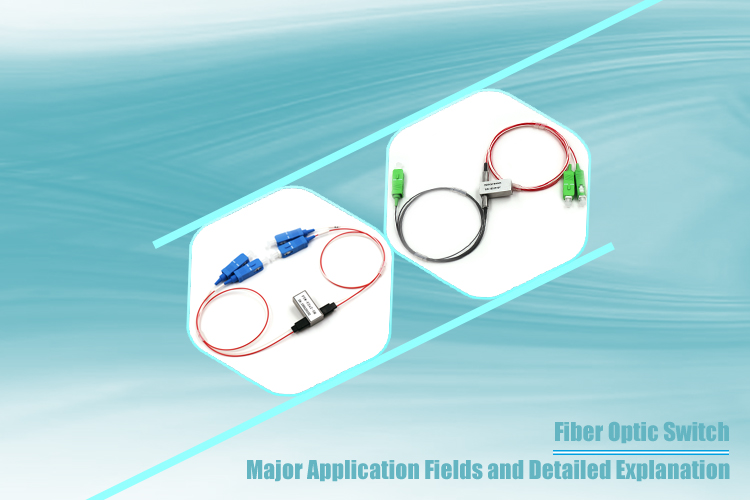Techniques for Polishing Fiber Optic Components: Hand Polishing, Machine Polishing, and Polishing Film
Introduction
In the world of fiber optic products, precision and quality are paramount. The manufacturing process requires meticulous attention to detail to ensure optimal performance and reliability. One crucial aspect of this process is the use of polishing paper and other grinding materials. These tools play a vital role in achieving the desired surface finish and geometrical accuracy of fiber optic components. In this article, we will explore the application of polishing paper and other grinding materials in the manufacturing of fiber optic products, discussing their importance, techniques, and benefits.

1. Understanding Polishing Paper: A Key Component
Polishing paper is a professional abrasive material used in the final stages of manufacturing fiber optic products. It is designed to deliver consistent results by providing controlled abrasion, precise removal of material, and the creation of a smooth surface. Polishing paper comes in various grit sizes, allowing manufacturers to achieve different levels of surface finish and geometrical accuracy.
1.1 Grit Sizes and their Impact
Polishing paper is available in a range of grit sizes, each serving a specific purpose. Coarser grits, such as 30 to 60, are employed for initial material removal, while finer grits, such as 120 to 3000, are used for achieving the desired surface finish. The selection of the appropriate grit size depends on the specific requirements of the fiber optic component being manufactured.
1.2 The Role of Binders in Polishing Paper
Binders play a crucial role in polishing paper. They hold the abrasive particles together, ensuring their uniform distribution and effective cutting action. Different binders, such as resin or glue, offer varying levels of hardness and adhesion to the paper. The choice of binder depends on the application and the desired cutting characteristics.
2. Techniques for Polishing Fiber Optic Components
Polishing fiber optic components requires precision and finesse. Various techniques are employed to achieve the desired results, ensuring the highest quality standards. Let's explore some of these techniques:
2.1 Hand Polishing Technique
Hand polishing involves manually holding and moving the fiber optic component against the polishing paper. This technique provides the advantage of greater control and flexibility, allowing operators to focus on specific areas that require attention. However, it can be time-consuming and may result in variations in surface finish due to inconsistent pressure or motion.
2.2 Machine Polishing Technique
Machine polishing offers a more automated and controlled approach. It utilizes professional polishing machines equipped with rotating polishing fixtures. The fiber optic components are secured onto the fixtures, which then move against the polishing paper in a controlled manner. Machine polishing ensures consistent pressure, motion, and contact between the component and the polishing paper, resulting in uniform surface finish and geometrical accuracy.
2.3 Polishing Film Technique
Polishing film is an alternative to polishing paper, offering unique advantages. It consists of a thin, flexible sheet with embedded abrasive particles. The film provides a more conformable surface, allowing for improved contact and uniform material removal. Polishing films are available in different grades, enabling manufacturers to achieve precise surface finishes.
3. Benefits of Polishing Paper and Other Grinding Materials
The use of polishing paper and other grinding materials in the manufacturing of fiber optic products yields several benefits, ensuring both performance and reliability. Let's delve into some of these advantages:
3.1 Enhanced Surface Finish
Polishing paper enables manufacturers to achieve an enhanced surface finish, free from defects or imperfections. This improved finish contributes to the overall optical performance of fiber optic components, ensuring optimal transmission of signals.
3.2 Geometrical Accuracy
Precise geometrical accuracy is crucial in fiber optic products. Polishing paper and other grinding materials aid in achieving the desired dimensional tolerances, ensuring proper alignment and connectivity between components.
3.3 Consistency and Reproducibility
The use of controlled abrasive materials like polishing paper ensures consistency and reproducibility in the manufacturing process. This consistency leads to predictable results, reducing variability and improving overall product quality.
Conclusion
The application of polishing paper and other grinding materials plays a vital role in the manufacturing of fiber optic products. These tools enable manufacturers to achieve the desired surface finish and geometrical accuracy, ensuring optimal performance and reliability. By employing techniques such as hand polishing, machine polishing, and utilizing polishing film, manufacturers can meet the stringent requirements of the industry. The benefits of these materials include enhanced surface finish, improved geometrical accuracy, and consistent results. The use of polishing paper and grinding materials is indispensable in the quest for high-quality fiber optic products.
FAQs
Q1. Is hand polishing or machine polishing more effective for fiber optic components?
Both hand polishing and machine polishing have their advantages. Hand polishing provides greater control, while machine polishing offers consistency and automation.
Q2. Can different grit sizes of polishing paper be used together during the polishing process?
Yes, different grit sizes are often used in a step-by-step manner to achieve the desired surface finish.
Q3. What are some common issues that can arise during the polishing process?
Common issues include scratches, uneven surface finish, and variations in geometrical accuracy.
Q4. Are there any alternatives to polishing paper for fiber optic component manufacturing?
Yes, polishing film is a viable alternative to polishing paper, offering unique advantages such as improved conformability and precise surface finishes.
Q5. How often should the polishing paper be replaced?
Polishing paper should be regularly inspected for wear and replaced when it becomes worn or loses its abrasive properties.
Now, that concludes our exploration of the application of polishing paper and other grinding materials in the manufacturing of fiber optic products.
Recommended Reading:The Importance of Polishing Paper and Other Supporting Materials in Fiber Optic Product Manufacturing

 What opportunities and challenges does free-space optical communication technology face?
What opportunities and challenges does free-space optical communication technology face?
 Opelink MPO Products for High-Speed Data Center Applications
Opelink MPO Products for High-Speed Data Center Applications
 CWDM vs. DWDM: Which Optical Transmission Technology Should You Choose?
CWDM vs. DWDM: Which Optical Transmission Technology Should You Choose?
 Major Application Fields and Detailed Explanation of Fiber Optic Switch
Major Application Fields and Detailed Explanation of Fiber Optic Switch